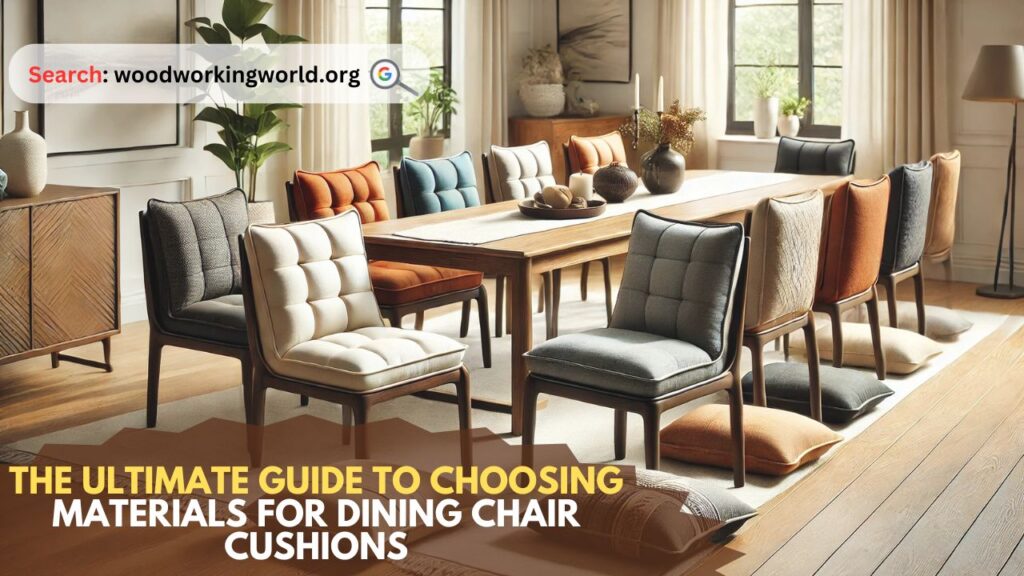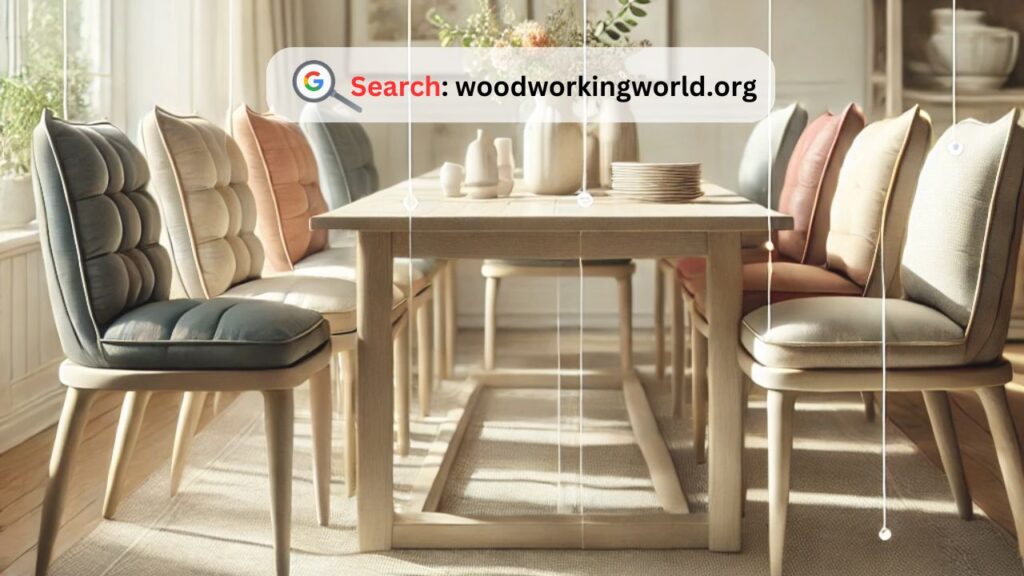The Ultimate Guide to Choosing Materials for Dining Chair Cushions
Dining chair cushions are not just about comfort—they’re a critical element of your home’s aesthetic and functionality. Choosing the right material can elevate your dining experience while ensuring durability and style. With countless options available, selecting the perfect material might seem overwhelming. This guide breaks it down step by step, helping you make an informed decision.

👉 Click here to unlock 16,000+ DIY woodworking plans now
Why Dining Chair Cushion Materials Matter
The material of your dining chair cushion directly impacts its:
- Comfort: Determines how cozy and inviting the chairs feel.
- Durability: Affects how well the cushions withstand daily use.
- Maintenance: Influences how easy they are to clean and care for.
- Style: Contributes to the overall look of your dining space.
“Cushions can transform a plain dining chair into a statement piece of comfort and style.” – Interior Design Enthusiast
Instant access to all 16,000 woodworking plans with step-by-step details, photos, materials lists and more
Key Considerations When Choosing Cushion Materials
1. Usage and Lifestyle
- For frequent use, prioritize materials that are both durable and easy to clean.
- Low-use areas allow for more delicate fabrics and textures.
2. Comfort
- Select soft, breathable materials like cotton or linen for added comfort.
- Foam density inside the cushion also affects comfort, so choose accordingly.
3. Maintenance
- Busy households benefit from low-maintenance, stain-resistant materials.
- For less traffic, materials like velvet or silk can add a luxurious touch.
4. Budget
- While premium materials like leather offer luxury, there are budget-friendly options like polyester blends that provide great value.
Popular Materials for Dining Chair Cushions
1. Cotton
- Pros: Breathable, soft, and widely available in various patterns and colors.
- Cons: Prone to staining unless treated.
- Best For: Casual, everyday use in low-traffic homes.
2. Linen
- Pros: Lightweight, elegant, and eco-friendly.
- Cons: Wrinkles easily and requires more care.
- Best For: Formal dining rooms with less frequent use.
3. Polyester
- Pros: Highly durable, stain-resistant, and budget-friendly.
- Cons: Lacks the natural feel of organic materials.
- Best For: Busy households and high-traffic areas.
4. Velvet
- Pros: Luxurious texture and vibrant color options.
- Cons: High maintenance and sensitive to spills.
- Best For: Upscale dining spaces or statement chairs.
5. Leather and Faux Leather
- Pros: Easy to clean, water-resistant, and long-lasting.
- Cons: Can feel cold in winter and hot in summer.
- Best For: Modern, minimalist, or high-end interiors.
6. Microfiber
- Pros: Soft, durable, and resistant to stains and spills.
- Cons: Limited design and texture options.
- Best For: Homes with kids or pets.
7. Outdoor Fabrics (Acrylic, Sunbrella)
- Pros: Extremely durable, weatherproof, and stain-resistant.
- Cons: May not feel as soft as indoor fabrics.
- Best For: Indoor-outdoor dining spaces or homes with heavy use.

Foam and Filling Options for Dining Chair Cushions
1. High-Density Foam
- Features: Firm support, retains shape well over time.
- Best For: Everyday dining chairs requiring durability.
2. Memory Foam
- Features: Contours to the body for personalized comfort.
- Best For: Chairs used for long sitting periods.
3. Polyester Fiberfill
- Features: Soft and fluffy, but compresses over time.
- Best For: Decorative cushions with occasional use.
4. Down and Feather Mix
- Features: Luxuriously soft, lightweight.
- Best For: High-end, decorative settings.
Comparison Table: Cushion Material Choices
| Material | Durability | Ease of Cleaning | Comfort | Cost |
|---|---|---|---|---|
| Cotton | Moderate | Moderate | High | Affordable |
| Linen | Low | Low | High | Mid-Range |
| Polyester | High | High | Moderate | Budget-Friendly |
| Velvet | Low | Low | Very High | Expensive |
| Leather | Very High | Very High | Moderate | Expensive |
| Microfiber | High | High | Moderate | Affordable |
| Outdoor Fabrics | Very High | Very High | Moderate | Mid-Range |
Tips for Maintaining Dining Chair Cushions
- Spot Clean Immediately: Address spills quickly to avoid stains.
- Vacuum Regularly: Prevent dust and crumbs from settling into the fabric.
- Rotate Cushions: Ensure even wear by rotating your cushions periodically.
- Use Protective Covers: For added protection, consider removable, washable covers.
- Follow Care Instructions: Always adhere to the fabric’s specific cleaning guidelines.
Top Fabric Choices Based on Specific Needs
- High-Traffic Areas: Polyester, microfiber, or outdoor fabrics.
- Luxury Appeal: Velvet, leather, or linen.
- Budget-Friendly: Cotton or polyester blends.
- Eco-Friendly Options: Linen or sustainably sourced cotton.

Conclusion
Dining chair cushions are more than just a functional addition—they’re a way to express your style and enhance comfort. The right material balances beauty, durability, and ease of maintenance to suit your lifestyle and budget. Take the time to explore your options, and you’ll find the perfect cushions to complement your dining space.
“Choosing the right cushion material is like finding the perfect recipe—it brings everything together beautifully.” – Home Decor Specialist
FAQs
- What’s the most durable material for dining chair cushions?
Polyester and outdoor fabrics like Sunbrella are known for their durability. - How do I clean dining chair cushions?
Most materials can be spot cleaned with mild soap and water. Check care instructions for specific guidelines. - Are removable cushion covers worth it?
Yes, they make cleaning easier and allow you to update the look of your chairs effortlessly. - Can I use outdoor fabric indoors?
Absolutely! Outdoor fabrics are durable, stain-resistant, and versatile for indoor use. - How often should I replace dining chair cushions?
Replace them every 3–5 years or as needed, depending on wear and tear.
👉 Click here to unlock 16,000+ DIY woodworking plans now
